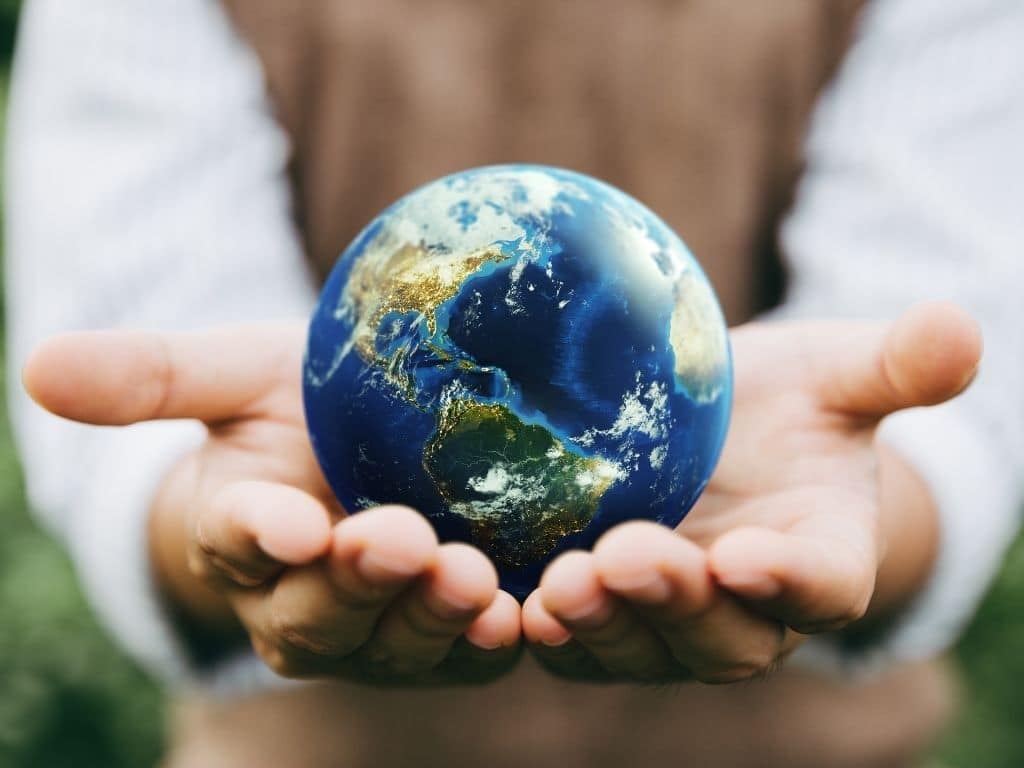Earth Day reminds us of the biggest environmental issues and their drivers. Here are 5 interesting Earth Day facts and how we can all do our part to help and support the environment.
—
Earth is home to more than 8 billion people, 300,000 plant species, over 600,000 species of fungi, and about 10 million animal species. Ecosystems around the world provide precious services and resources to sustain all life on Earth, yet humanity continues to take them for granted. Anthropogenic climate change is threatening the planet, and we need to do everything we can to conserve and protect our home.
Earth Day, celebrated annually on April 22, is a global event dedicated to raising awareness about environmental protection and sustainability. Keep reading to learn about fascinating Earth Day facts and discover actionable ways to get involved in preserving our planet for future generations.
1. Earth Day was first celebrated in 1970
Prior to the first Earth Day, Americans were guzzling up vast amounts of leaded petrol – the global use of which has since been eradicated. Deadly smog and polluting smoke were also accepted daily occurrences. However, following a series of oil spills and emerging public consciousness about the detrimental impacts of air and water pollution, people’s attitude changed.
Inspired by the energetic student-led, anti-Vietnam war protest movement, US Senator Gaylord Nelson introduced a teach-in on college campuses on environmental awareness, which eventually snowballed into the global movement know today as Earth Day.
2. Earth Day is the largest secular observance in the world
Despite being celebrated almost exclusively in the US for almost 20 years, Earth Day has now become an internationally recognized day and is celebrated across more than 192 countries. Every year, 1 billion individuals across the globe are united and mobilised for the same cause – greater environmental awareness and climate action.
3. Earth Day always takes place on April 22
Senator Nelson originally picked April 22 as the first Earth Day as it fell right between Spring Break and final exams, maximizing student participation and turnout for the event. It has been kept on the same day to encourage even more college students to join in celebrations and protests, and every year, thousands of rallies, concerts, and outdoor activities are organized worldwide.

4. Earth Day cemented many major environmental policies
The first edition of Earth Day kicked off the national conversation on the lack of environmental laws in the country, which led to the adoption of some of the most important and comprehensive federal laws on environmental protection. This included the Clean Air Act (1970), the Clean Water Act amendment (1972), and the 1973 Endangered Species Act.

In 2016, the United Nations also chose Earth Day to sign the Paris Agreement, the world’s most important and comprehensive climate agreement for limiting global warming to below 1.5C or at least “well below” 2C above pre-industrial levels.
5. Earth Day wants us to unite behind renewable energy
Each edition of Earth Day has a different theme. The 2025, theme, “Our Power, Our Planet,” calls for everyone to unite around renewable energy and the global target to triple clean electricity by 2030 agreed upon at COP28.
You might also like: 15 Biggest Environmental Problems of Our Lifetime
How You Can Get Involved
Climate change is undoubtedly the biggest environmental issue we face today, and we are running out of time to reverse it. The latest report by the Intergovernmental Panel on Climate Change warns that global temperatures will very likely rise 1.5C above pre-industrial levels by 2040, and it is “now or never” to limit global warming.
We have all the tools and options to drastically reduce greenhouse gas emissions. It is time we make use of them.
1. Civil action
Public pressure and civil society mobilization are the greatest tool in global shed to drive institutional and systemic changes. Hold politicians, governments and companies across sectors accountable for their actions – target organisations and businesses that are linked to fossil fuel industries, deforestation, and harmful activities to the environment that could lead to the loss of habitats and biodiversity.
Whether it is the fast fashion industry that is generating millions tonnes of textile waste and wastewater, or the companies that recklessly generate emissions and pollute the environment, you can use your voice and make a difference. From local petitions and advocacy to large-scale boycotts and protests, there is no action too small.
2. Individual action
We can achieve a sustainable future for us with our combined efforts, if every individual in the world make changes to their lifestyles. You can make it a habit to join in community reforestation efforts or beach cleanups.
On an individual level, simple switches to plant-based diets (or at least reduce meat consumption) can alleviate significant stress on deforestation and emissions in the agricultural sector; eliminating single-use plastics and replace them with reusable and recyclable materials; giving up fast fashion in support of sustainable fashion; opting for public transportation and low-emission means of transport such as biking and electric cars can all go a long way.
Don’t forget, daily acts of composting and recycling are not to be underestimated in reducing your carbon footprint.
Check out our new ‘What Can I Do’ portal to find out how you can play a part in the fight against climate change. Act now!
💡How can I contribute to a more sustainable planet?
- 🗳️ Vote for climate action: Exercise your democratic rights by supporting candidates and policies that prioritize climate change mitigation and environmental protection. Stay informed with Earth.Org’s election coverage.
- 👣 Reduce your carbon footprint: Make conscious choices to reduce your carbon footprint. Opt for renewable energy sources, conserve energy at home, use public transportation or carpool, and embrace sustainable practices like recycling and composting.
- 💰 Support environmental organizations: Join forces with organizations like Earth.Org and its NGO partners, dedicated to educating the public on environmental issues and solutions, supporting conservation efforts, holding those responsible accountable, and advocating for effective environmental solutions. Your support can amplify their efforts and drive positive change.
- 🌱 Embrace sustainable habits: Make sustainable choices in your everyday life. Reduce single-use plastics, choose eco-friendly products, prioritize a plant-based diet and reduce meat consumption, and opt for sustainable fashion and transportation. Small changes can have a big impact.
- 💬 Be vocal, engage and educate others: Spread awareness about the climate crisis and the importance of environmental stewardship. Engage in conversations, share information, and inspire others to take action. Together, we can create a global movement for a sustainable future.
- 🪧 Stand with climate activists: Show your support for activists on the frontlines of climate action. Attend peaceful protests, rallies, and marches, or join online campaigns to raise awareness and demand policy changes. By amplifying their voices, you contribute to building a stronger movement for climate justice and a sustainable future.
For more actionable steps, visit our ‘What Can I do?‘ page.
This story is funded by readers like you
Our non-profit newsroom provides climate coverage free of charge and advertising. Your one-off or monthly donations play a crucial role in supporting our operations, expanding our reach, and maintaining our editorial independence.
About EO | Mission Statement | Impact & Reach | Write for us














